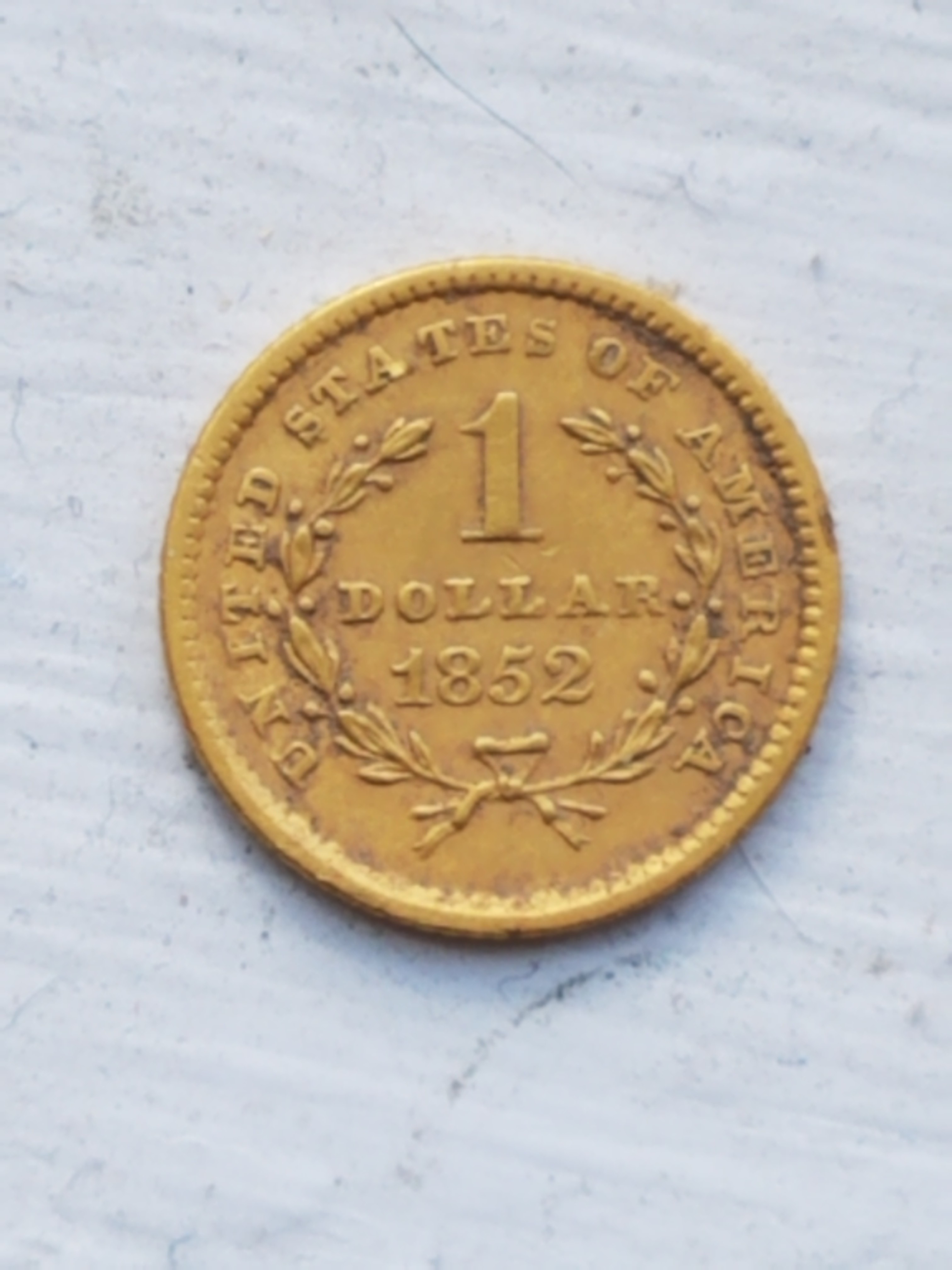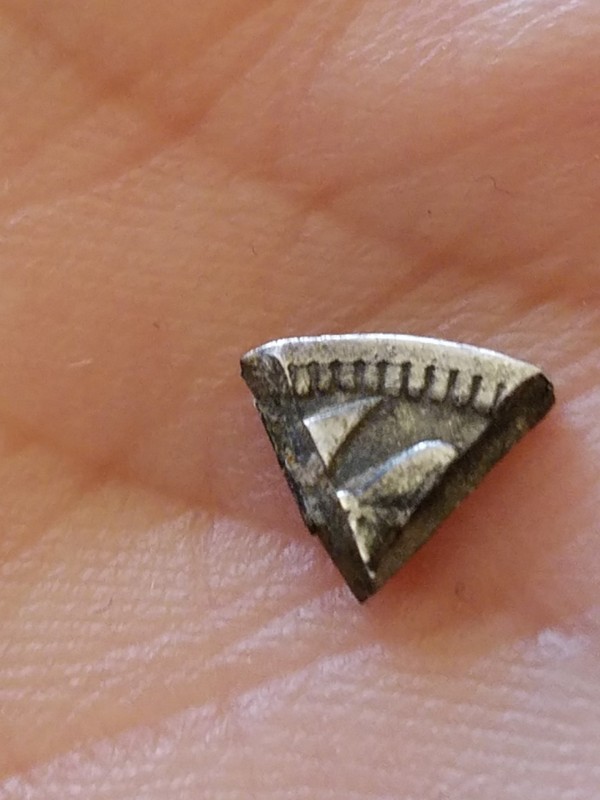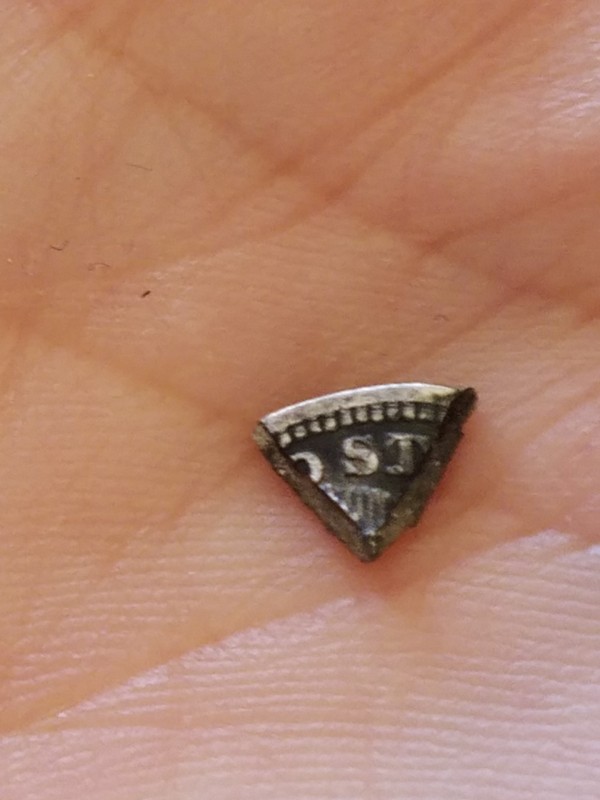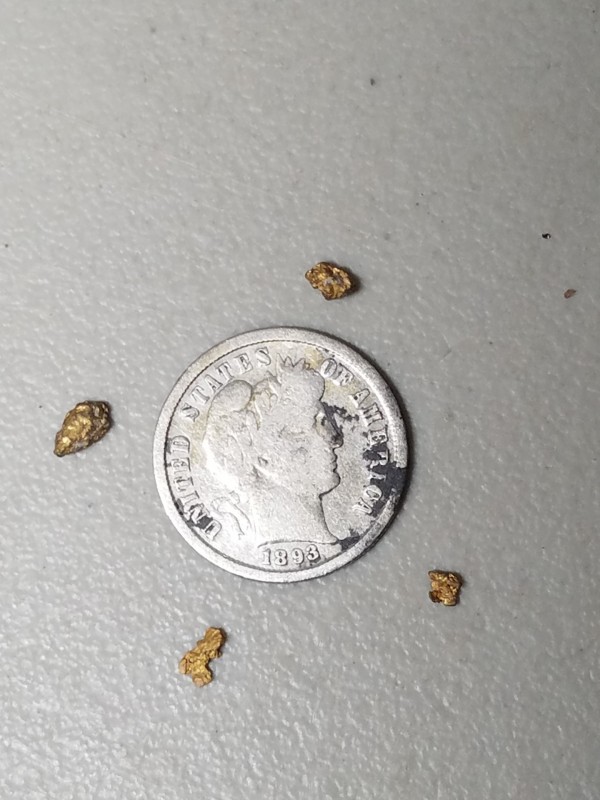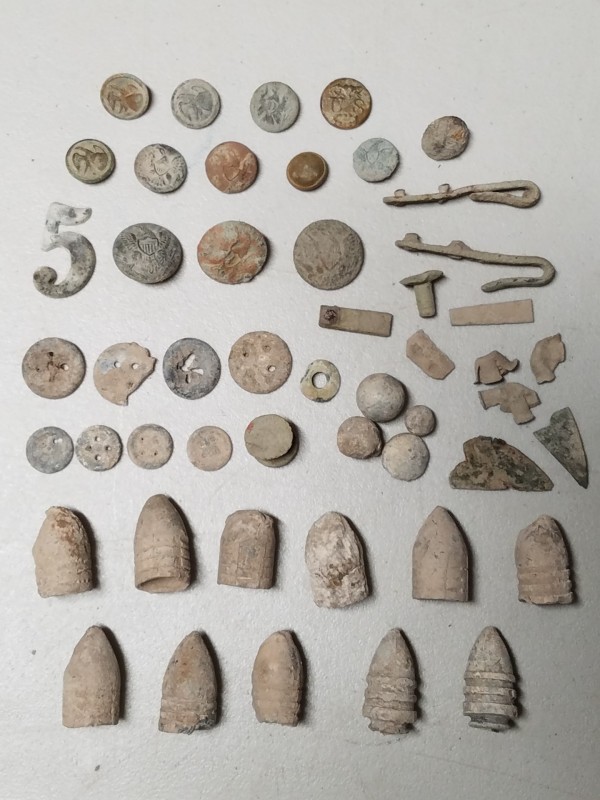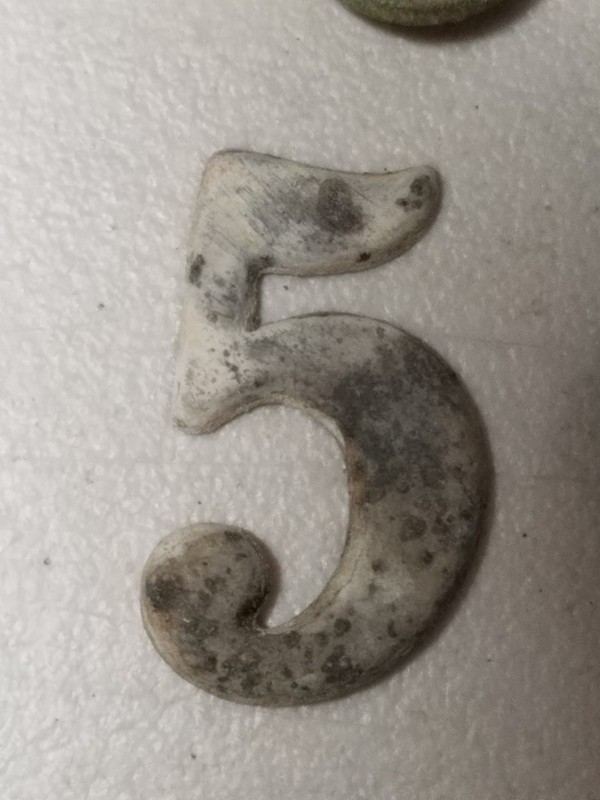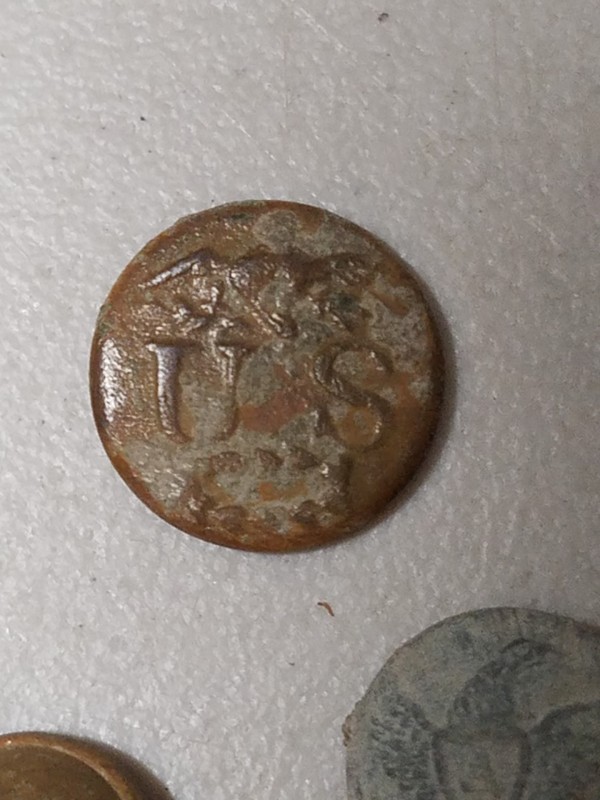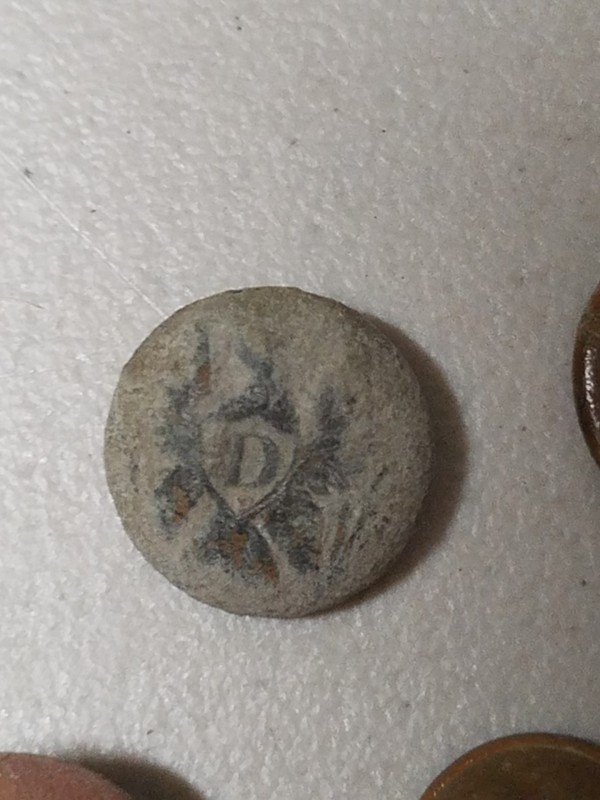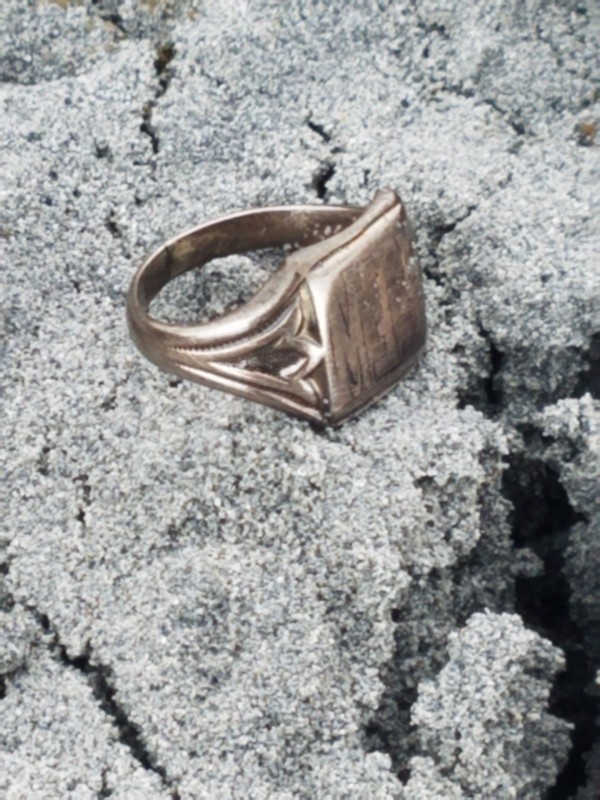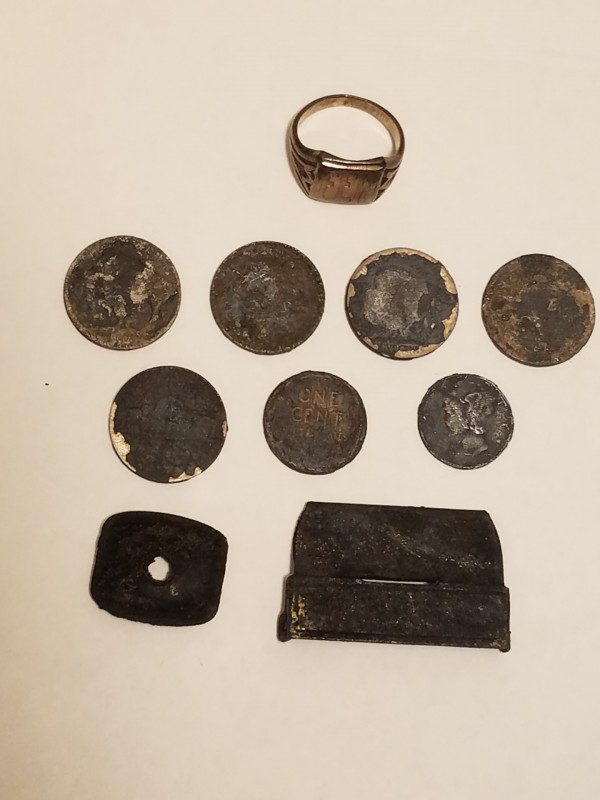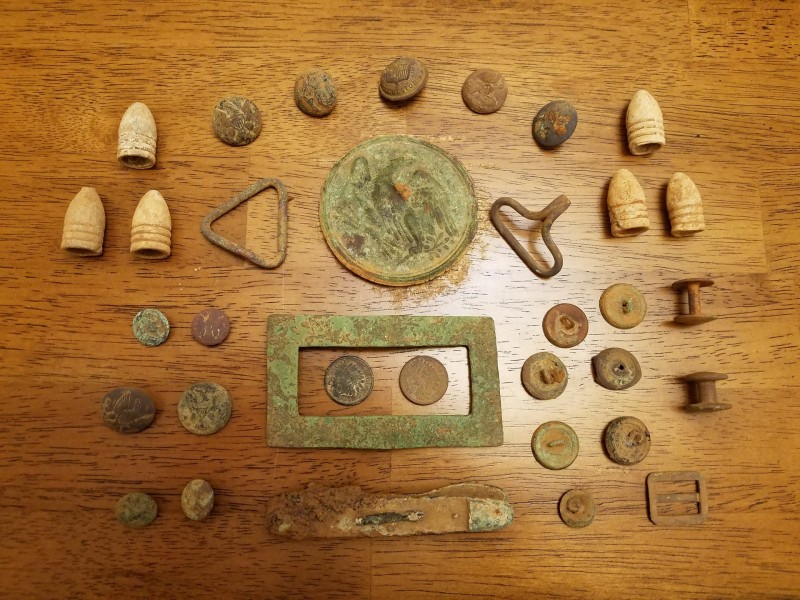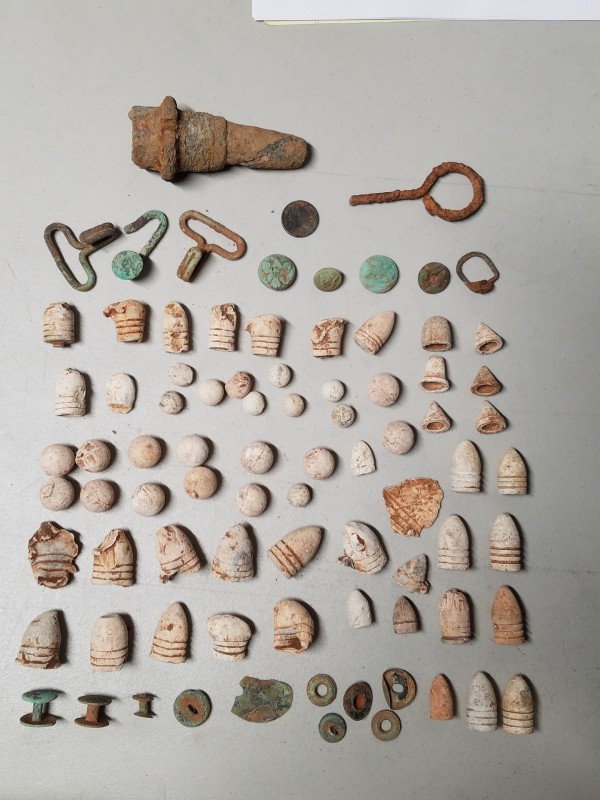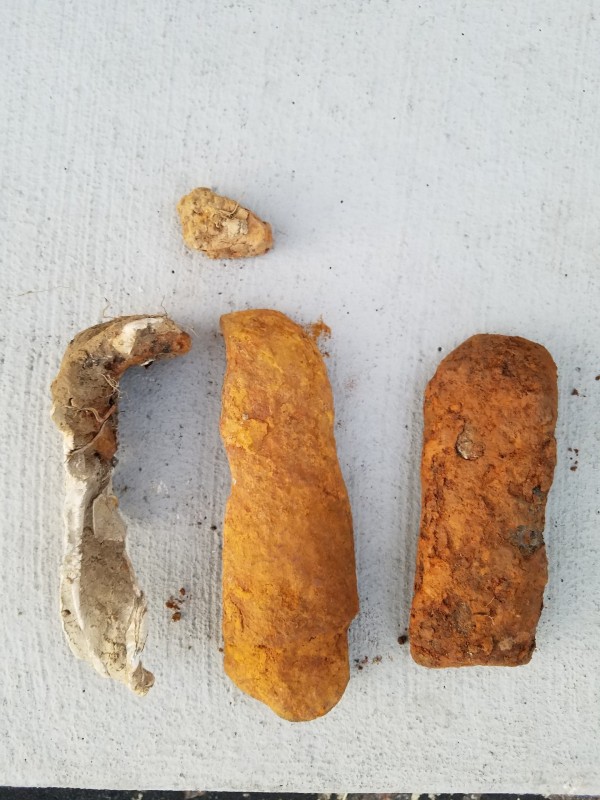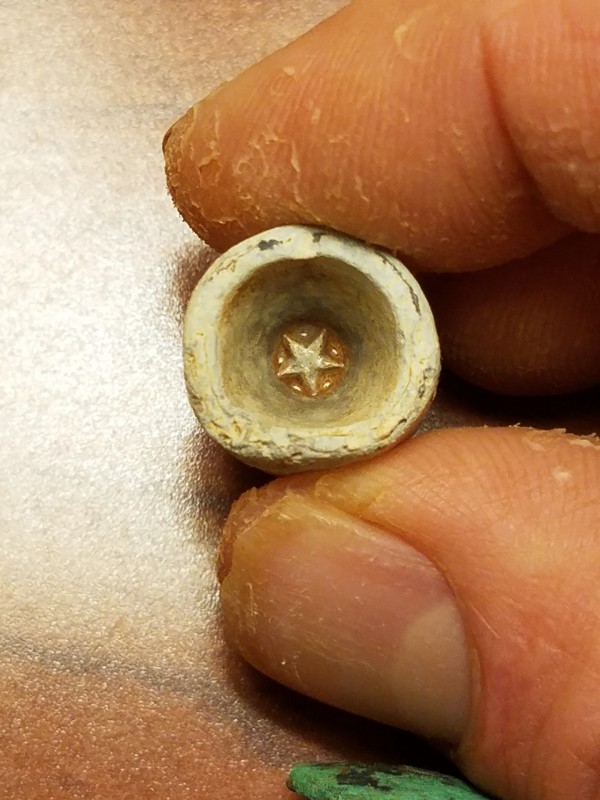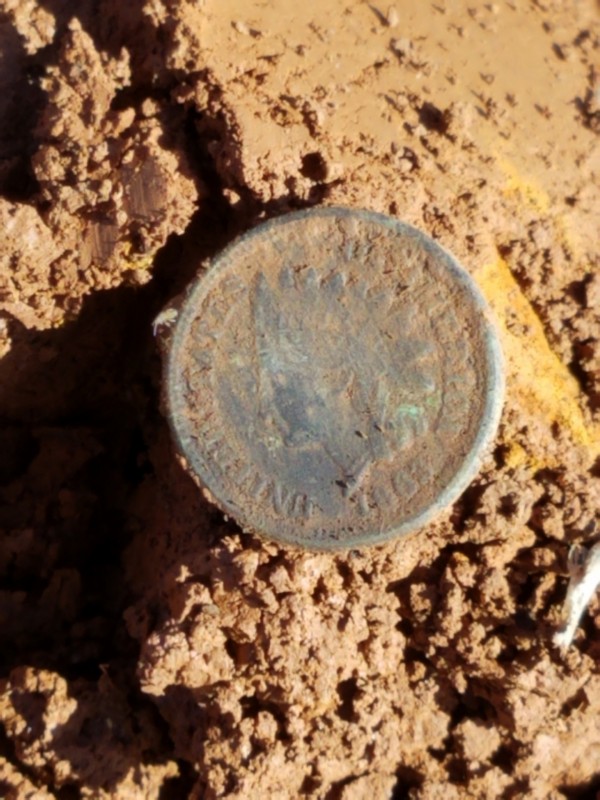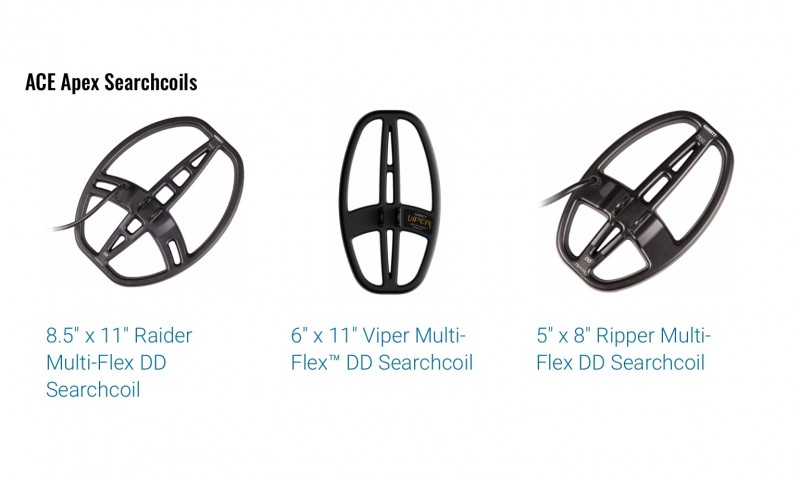-
Posts
995 -
Joined
-
Last visited
Content Type
Forums
Detector Prospector Home
Detector Database
Downloads
Everything posted by abenson
-

Silent Masking / Overload With Tarsacci MDT 8000
abenson replied to Steve Herschbach's topic in Tarsacci Metal Detectors
Steve what were your other settings if you remember? and were you using tracking ground balance? On thing I've learned about the Tarsacci is it's usually better to have it run stable than push it. At the point the machine becomes bubbly (hard to explain) it's time to back off either the Threshold or sensitivity. I personally like to decrease sensitivity down first because reducing threshold takes away from the target (Ability to hear deep targets). Yes black sand seems to reduce the transmission voltage as every time I've used it On vs OFF when comparing signals from targets, On always sounds worse. Another thing is I always salt balance even if it doesn't make sense for the area you are using it. Salt balance coupled with ground balance can be used to manipulate the Tarsacci to do some cool stuff. A discussion for some other time. But to answer your question no I have not had my Tarsacci audio completely shut down. I have had it blank out momentarily but I always thought that was my wireless headphones losing connection and maybe it was. -
Should have posted this review a few months back but never seemed to get around to it. I took a trip to Virginia in November 2020 for 6 days to Hunt the Diggin In Virginia event. Hugh Campbell was at this event also with his Tarsacci and hopefully he will add his thoughts. I used it 2 days and below is my experience with the Tarsacci for those that want to know how it handles the hot soil. Day 1-Used the Tarsacci for about 3 hours just to see what settings were required and how the unit handled the hot soil. Settings were 12 and 18 KHz, threshold -2, sensitivity 7, Black Sand OFF, salt balance 44, ground balance 552 (which surprised me), Disc mode with disc set at -30. The Tarsacci with the above settings ran quiet and stable. I dug a lot of targets, all iron just so I could confirm what I was hearing. Some targets were clearly iron as negative numbers were mostly present from all angles. However, some of the targets were really hard to tell if they were iron or not as the signal gave about 50/50 positive and negative numbers. I will elaborate more below in the comments about my 7 hour hunt. Day 3-Rained all day long, so I opted to use the Tarsacci instead of the GPX since it isn’t waterproof. The settings changed drastically due to the wet soil. In order to get the Tarsacci stable enough to hunt the wet ground I had to run either 6.4 or 9 KHz, threshold -2, sensitivity 7, Salt balance all the way up to 50, ground balance changed between mid-500’s up to low-800’s, all metal mode. Now let me elaborate on some of the settings. Black sand OFF worked best but the machine was quieter with is ON. However, the signal changed with it on to a more elongated signal which made it harder for me to tell a good target from a ground signal or bad ground balance. I ran all metal mode due to all the false signals running in disc mode. It was just easier to tell what a good signal was and then evaluate it in all metal. Now the ground balance was always changing like crazy from the bottom of a hill to the top of a hill. On the low ground at the base of the hills the ground was about 550, as you went up the hill the ground changed and you could tell by how unstable the Tarsacci got so I had to re-ground balance about every 10 feet, At the top of the hills the ground balance was about 810. From this experience salt balance could use a higher range. I was all the way up to 50 and could have used a few more points to get it right on. It may or may not have helped with the ground balance. I also tried tracking ground balance and the machine was not as stable as simply re ground balancing as needed. One thing I noticed with ground balance, if you got it on and then manually went down a few points to make it negative, the machine was supper quiet. But it was a pain in the you know what with the ground changing so much. If you could keep on the same level of the hills it would stay in balance for a while, but it wasn’t practical to hunt that way. Now for the targets recovered and how deep the Tarsacci is in the hot Culpeper soil. I used the Tarsacci for 7 hours in the rain and recovered 6 .58 cal. minie balls and 8 pieces of camp lead. Down to about 6 or 7 inches the Tarsacci has no issue telling ferrous from non ferrous. It’s the deeper targets down to about it’s limit of approximately 11 inches that things get tricky. 2 of the bullets I recovered came from about the 11 inch range, so I know it will get at least that deep and still be able to tell a good target with proper signal and ID evaluation. The Tarsacci will go deeper but at that point you are digging everything. Since targets were not closely located, I opted to use All-metal the entire 7 hours. When I got a signal, I would circle the target making multiple sweeps in each direction and watch the ID. As I said targets down to about 7” were no problem to ID. Deeper targets did give some good data as to what they were by circling the target and watching the ID. For the most part I dug all questionable signals so I could learn what to look for. Nails about half the time would double deep. Also, for the most part nails could be identified because they would read negative when sweep across the short side and had mixed positive and negative numbers when swept length wise. A bullet or camp lead on the other hand when questionable would read mixed positive and negative numbers all the way around and the positive number range stayed in mid 20’s when they did bounce. Now deep odd shaped iron was the easiest to tell because it bounced between -28, 29, 30 to positive 28, 29, 30 indicating iron wrap. I was fooled by quit a bit of bend wire as it did have the same characteristics as the deeper bullets. The area I hunted had been pounded by GPX’s for the 2 days before, so I feel like the Tarsacci performed pretty well in recovering 14 good targets. I hate to make this a comparison discussion, but I think it will help put things into perspective. A lot of people want to know what to use when they hunt this hot soil. I have used the Deus, Equinox, Tarsacci and GPX and feel I know them pretty well. The Deus and Equinox in my experience can give a good ID down to about 6 inches on coin sized targets, 10 inches on bigger targets like a breast plate. The GPX is really deep, bullets to 16 inches are not uncommon, but is also a PI. The Tarsacci is somewhere in the middle and definitely has it’s place and IMO handles the soil better than both the Equinox and Deus. If you are on a budget and lived in the area of Culpeper and could only have 1 machine, I think the Tarsacci would be my pick. It’s waterproof, light, and has reasonable depth. It also makes a great backup to the GPX for days when the weather is bad. I personally won’t take my GPX in the rain. Every time I have, even when covered, I always end up with problems. Last time it was my headphone connection to the battery getting wet and shorting out. The time before that the cable connection from the battery to the detector got wet and shorted out. The Tarsacci in the rain was issue free. I used the Garrett z-lynk system on it covered with a plastic bag and had no issues.
-

9” HF Round Versus 5” X 9” Elliptical
abenson replied to Steve Herschbach's topic in XP Metal Detectors
I've had every size coil XP makes from the 11 x 13 X35 down to the 5 x 9.5 HF. I don't primarily coin hunt but I do occasionally make it to the local parks. IMO if you really want to get another coil and you only coin hunt I would go with the 9" X35. X35 coils are better suited for coin hunting because you have more usable frequencies at your disposal. The HF coils have 1 really good frequency for coin hunting at 14 KHz the other frequencies are going to be better for small jewelry. The only advantage I can see with going for the HF elliptical coil would be if you're hunting extremely trashy sites and need the separation. For me the Deus is a relic/ghost town hunter first and a gold hunter second. I'm down to 2 coils for the Deus. They are the 9" round HF and the 9" elliptical HF. For me these coils make more sense. The HF coils were designed for gold prospecting but have made there way into all sorts of hunting scenarios, most of which they do quite well at. The other thing is that HF coils are really hard to find right now due to supply issues. -
Jeff, Hugh, Steve and others, thanks for the kind words. I'll say it again I'm not a nugget hunting expert but I have done it enough to know the basics. I've found gold with the GPX, Equinox and Deus. But Jeff, Steve and others I can assure you have way more success and experience than I do, so heed their words of wisdom. That being said Jeff had mentioned that he hoped I would do another video on the Deus and go into more detail. Well I had actually already done some filming a few weeks ago for XP Team USA and just finished the video.
-
I'm no nugget hunting expert. But the Deus will pick up the small bits of gold about as well as any gold hunting VLF. Hot rocks in the area I was hunting were fairly common. But that's were the gold hides, in those areas other avoid.
-

Post The Smallest Silver Coin You Have Found
abenson replied to Wendell Clark's topic in Metal Detecting For Coins & Relics
Does this count? It's actually a small bit of a seated quarter. I figured it's from an 1853 with arrows and rays. Found it with the Equinox at a military camp in Utah. -

Minelab GPX 6000 Controls & Setup
abenson replied to Steve Herschbach's topic in Detector Prospector Forum
It could be that the 6000 automatically senses when a DD coil is attached. They might even have iron reject built in and optimized for soil conditions. -
The 440 will pickup surface gold as small as the tiny nuggets pictured below. But there are a few things you need to consider. First tiny nugget are going to read 1 or 2 in most cases so running the coin program or at least a program that accepts all targets down to zero will need to be used. Second. If your ground is mineralized at all you're going to be at a disadvantage with the 440 because it has no ground balance or recovery speed adjustments. Running in either coin or jewelry mode has the quicker recovery. Gold specific metal detectors such as the Fisher gold bug 2 and gold monster will pick up those tiny specs up to about 3" deep because they have ground balance and run at higher frequencies.
-
Pictures of the box are bad on Facebook but from what I can see it says "All Gold, All Soils, All the Time" At the bottom of the box it says All Gold, Lighter weight, Easy Expert, up on the side it repeats a lot of what's on the bottom but I think it also says Built to Last, Nothing about waterproof though. I could be wrong about some of what it says, hard to read bad photo.
-
If it can't cross over as a beach or relic detector I'm not interested. But I hope it can! If the user has any control over the settings it can probably be adapted to hunt relics, coins and rings. I also hope it has iron reject. There just aren't enough gold nugget hunting areas close enough to me to make it feasible to buy for nuggets alone. Notice the cable is on the outside of the rod, I thought I read somewhere it was going up the rod.
-
Got out 2 days before everything froze up around here. Actually surprised at the amount of stuff I found. Couple of good buttons found too, like a great coat cuff size, a few kepi buttons, Eagle D cuff and coat buttons.
-

Some Year End Silver And Gold With The GPX
abenson replied to abenson's topic in Metal Detecting For Jewelry
Signal on the ring was a good high tone and was about 12-14" deep. Yea coins are pretty bad, they were found at a saltwater beach. -
Cold day but I wanted to try out Docs Gold Screamer setup on my GPX that I got for Christmas. Paired it up with the Garrett z-lynk system and boy is it nice to be wireless. Anyway in a 3 hour hunt I found a 10k 8 gram ring, some brass buckle parts and some older coins. They're hard to see so what's pictured is a wheat penny, merc dime, Jefferson nickel, 3 buffalo nickels and a V nickel.
-

Fisher AQ Limited
abenson replied to Carolina's topic in First Texas - Bounty Hunter, Fisher & Teknetics
Yea I'm waiting for the production model as well at this point. Glad I held off on the limited after hearing about the battery life and wire issues. And after preliminary reviews I'll probably just wait for the prospector version which should be better suited for my use. -

Civil War Relic Hunt In Virginia
abenson replied to abenson's topic in Metal Detecting For Coins & Relics
Yes Tom agreed, it's all about using the right tool for the job. A year and a half ago I got into an area just like you described. I always have my Deus in my backpack at these hunts and when I hit this area everyone else was avoiding I pulled out he Deus. Below is the finds I made in a half a day of hunting a very trashy hillside. -
Earlier last month I attended Diggin in Virginia. It's an invitational relic hunt that takes place around Culpeper, VA that about 200 people attend. The ground is very hot there, as many know, so the detectors of choice are usually PI machines like the TDI, ATX and GPX. Some VLF's work but get significantly less depth than the PI's. I have taken my Deus, Equinox and Tarsacci and found stuff with all of them. This time around I used the GPX most of the time but did pull out the Tarsacci on a rainy day for about 7 hours. I'll give a more detailed report about the Tarsacci in the Tarsacci section at a later date. I also meet up with forum member Hugh Campbell so maybe he'll add some details when he has time. Some of the highlights of the hunt you will see in the pics below were shell frags, an 1863 IHP, complete 3 piece Shaler bullet, star based .58 minie from the Washington arsenal, Schenkl combintion fuse and Eagle I cuff button.
-
Just my 2 cents. But I suggested the Equinox 800 to a friend that had never owned a metal detector before. He bought it at the beginning of the summer and I have been out with him a few times. He is really struggling with the unit even in the preset modes. I go over a target and have him listen and he still struggles to understand the tones and ID. Not sure the Equinox 800 is a good choice for someone who has never owned a metal detector before. The Vanquish IMO would be a better first detector, the tones and ID are more straight forward. Nokta Makro Simplex would be another good one.
-
Well I can tell you in the hot Culpeper dirt of VA that the Equinox ground balances in the mid to high teens in Park 1 and that's really hot ground. So it appears the higher the number the milder the ground. But maybe I'm wrong. In Utah I ground balance in the low teens, on the Fisher F75 it's 4-5 bars.
-

Metal Detecting Depth
abenson replied to Martini_Meow's topic in Metal Detector Advice & Comparisons
I'm pretty confident a GPX would hit. But they're expensive -

Minelab Multi I Q Hype?? Watch This
abenson replied to Jeff McClendon's topic in Metal Detector Advice & Comparisons
Jeff I saw your post last night but didn't have time to comment. As you do more video it will get easier to film and edit, so keep at it. I'm not that great either and even though I have 2 GoPros I still tend to use my Samsung smart phone for most of my videos. I hate to keep harping on the Apex but this exact situation is why I'm not a big fan of it. The MF on the Apex has very little if any difference in operation as any of the single frequency settings. Even Calabash noted this in his mild ground. The Equinox and to a great extent the Vanquish are 2 of the only metal detector platforms that I know of that can hold a relatively accurate ID at over 6 inches. (Got to through the FBS and BBS platform in there as well) Good example: I've got unmarked dimes buried in my lawn at 2, 4 and 6 inches, add tall grass and add 2 inches. The above mentioned machines are the only ones I can take out and find all 3 at any given time. All other detectors I own struggle to find them let alone ID them correctly without knowing exactly where they are. Now take that info into the field and look at what you have. A lot of unnecessary digging and good targets left in the ground. It's exactly why I have a PI I use for cleanup duty. -
We like to keep it a secret. LOL I like mine I just don't post finds much. In 2 weeks I will be in Culpeper, VA and will hopefully meet up with Mr Cambell AKA ChaseGoldman. We hope to give the Tarsacci a go in that hot dirt and hopefully finds some Civil War relics. I'm sure we'll have a lot to say once we return.
-

Garrett Acquires White's Electronics!
abenson replied to Steve Herschbach's topic in White's Metal Detectors
Wow that is great news! -

10 Things I Like And 5 Things Don't Like About The Garrett Apex
abenson replied to abenson's topic in Garrett Metal Detectors
As far a s false signals go I haven't really experienced that in clean ground (other than 1 park I went to). But when you enter a patch of iron. look out! The closest thing I can compare it to is the Equinox when running it hot, which I do most of the time. By hot I mean sensitivity all the way up, iron bias at F2 0 and horseshoe on. The difference is with the Equinox you can pretty much tell a false on a nail vs a good target pretty quick. The good target on the Equinox will lock in and tune out the iron. With the Apex it's weird you can't really hone in on the target even when it's good. It's like close nails tend to steal the strength of the signal so you get a centered hit on the good target then a hit off to the side and as you circle around the good signal the center moves. Drives me nuts! It doesn't help that iron pulls the ID and audio so far down on the Apex either. And Garrett is in the background doing videos trying to explain iron masking, like we don't already understand that issue. Well it's a different story when you can see the coin/target next the the nail on the surface and it's beeping on a dime with an ID at 37-40. But try going out in the field and use that theory. You have a group of signals all over the place in the 15-40 (yea nails false that high I've experienced it first hand) range trying to pick out a good target, and the good target is only coming in at 37-40. On top of that you can't get it to lock in. Maybe I have a bad machine, but I know it's not me. I've got enough experience metal detecting that I know it's either a bad machine or a bad design, not sure which.

